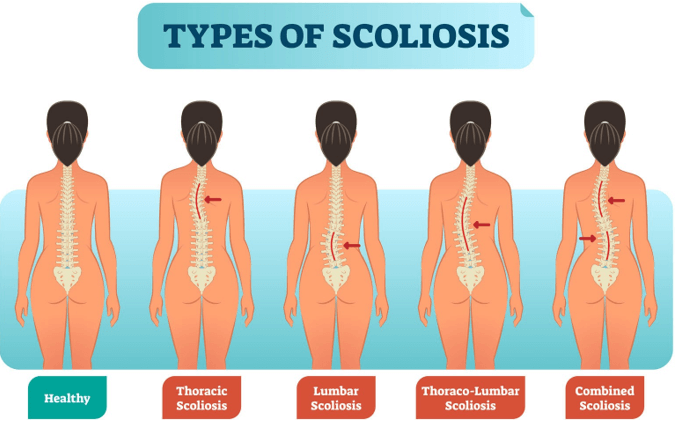The practical nurse (PN) plans to screen only high risk children for scoliosis. Which group of children should the PN screen?
High school boys.
High school girls.
Middle school boys.
Middle school girls.
The Correct Answer is D
This is the group of children that the PN should screen for scoliosis because they are at the highest risk of developing this condition. Scoliosis is a lateral curvature of the spine that usually occurs during the growth spurt before puberty. Girls are more likely than boys to have scoliosis, and the condition tends to worsen during adolescence.

Nursing Test Bank
Naxlex Comprehensive Predictor Exams
Related Questions
Correct Answer is D
Explanation
A. Explaining the procedure and obtaining the signature is the provider’s responsibility, not the practical nurse’s.
B. Checking the medical record for a signed consent form is part of the practical nurse’s verification role but does not address assessing client understanding.
C. Obtaining consent from a family member is only appropriate if the client is unable to provide it; otherwise, consent must come directly from the client.
D. The practical nurse is responsible for ensuring the client understands the procedure and the purpose of the consent form, reinforcing the provider’s explanation and promoting informed consent.
Correct Answer is A
Explanation
This client should be reassessed by the RN prior to transfer, as worsening perineal pain may indicate a hematoma, infection, or inadequate pain management. The RN should inspect the perineum, check the vital signs, and evaluate the effectiveness of the medication.
The other options are not correct because:
B. A multigravida whose peri-pad is 1/4 saturated with lochia rubra after one hour does not need to be reassessed by the RN, as this is a normal finding for a client two hours post-birth. Lochia rubra is a red-colored vaginal discharge that contains blood and debris from the placental site, and it usually lasts for 3 to 4 days after delivery. A peri-pad that is 1/4 saturated after one hour is within the expected range of blood loss.
C. A multigravida complaining of strong afterbirth pains when breastfeeding does not need to be reassessed by the RN, as this is a normal finding for a client two hours post-birth. Afterbirth pains are cramps caused by uterine contractions that help shrink the uterus and prevent bleeding. They are more common and intense in multiparous women and during breastfeeding, as oxytocin is released and stimulates contractions.
D. A primigravida who passed a small clot when she sat up on the edge of the bed does not need to be reassessed by the RN, as this is a normal finding for a client two hours post-birth. Small clots may form in the uterus or vagina due to pooling of blood during rest or anesthesia, and they are usually expelled when changing position or ambulating. As long as the clot is smaller than a plum and there is no excessive bleeding or pain, it is not a cause for concern.
Whether you are a student looking to ace your exams or a practicing nurse seeking to enhance your expertise , our nursing education contents will empower you with the confidence and competence to make a difference in the lives of patients and become a respected leader in the healthcare field.
Visit Naxlex, invest in your future and unlock endless possibilities with our unparalleled nursing education contents today
Report Wrong Answer on the Current Question
Do you disagree with the answer? If yes, what is your expected answer? Explain.
Kindly be descriptive with the issue you are facing.
